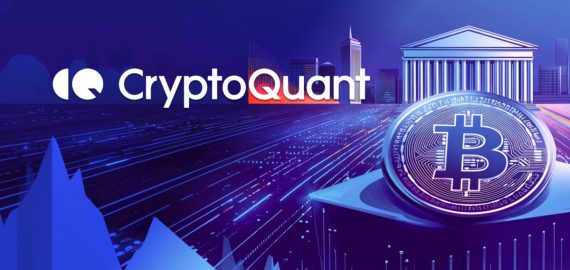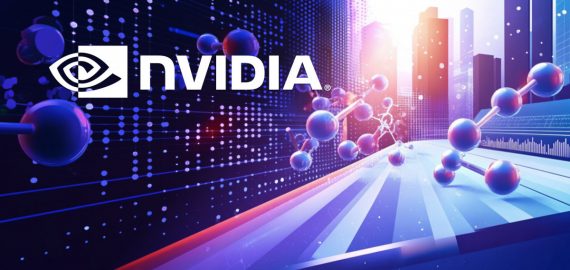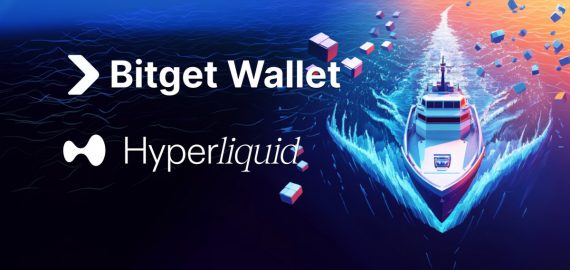PowerPool’s Visionary Leap into Web3’s AI Future with PowerPool 2.0 Capturing the AI Agents Market


In Brief
PowerPool 2.0 addresses Web3 market challenges with DeFi indices and meta-governance concepts, leveraging its own infrastructure for AI Agent protocols.
New AI solutions like Google’s Bard and OpenAI’s ChatGPT urged a huge rise in the AI sector. It is anticipated to grow at an annual growth rate of 42%, from $40 billion in 2022 to $1.3 trillion in the next ten years. The infrastructure needed for short-term AI system training is mostly to blame for this spike.
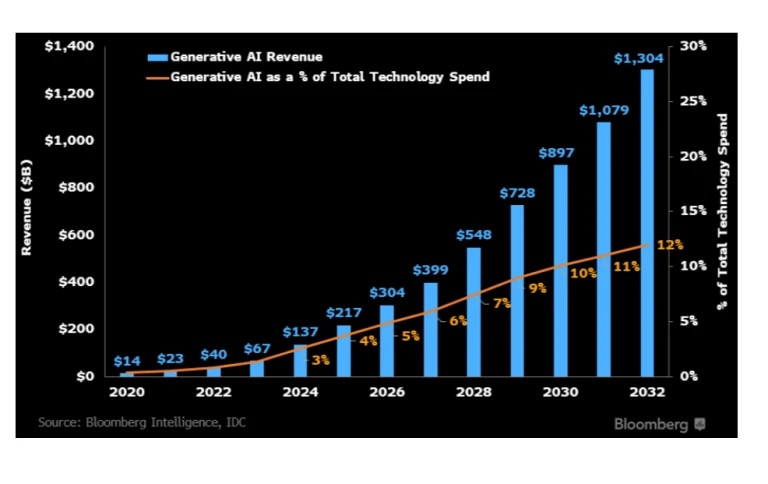
Language models, virtual ads, specialized software, and services are potential future growth sectors. The growing market for AI goods driven by specialized assistants, new infrastructure solutions, and coding acceleration tools is anticipated to bring an extra $280 billion in software sales.
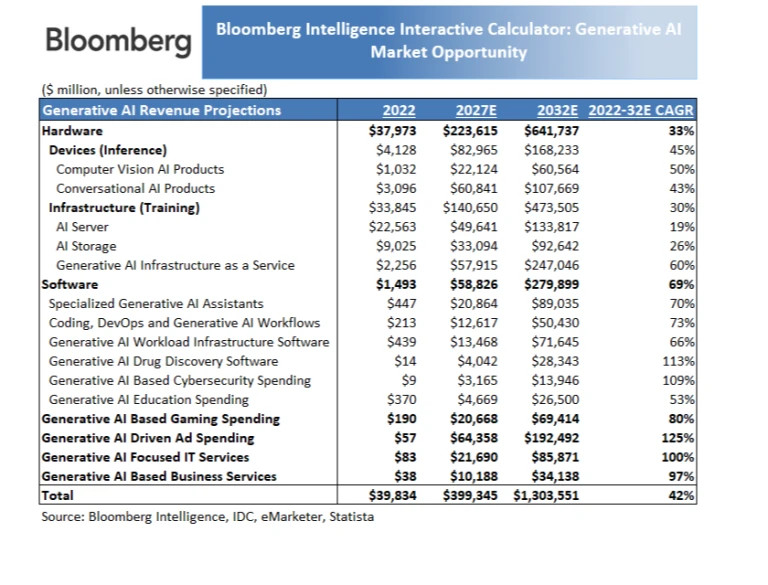
AI agents have recently drawn a lot of interest since they can generate new data and make judgments depending on user demands. AI agents must be pre-trained on current data to provide these services. They automate tasks that traditionally require significant human knowledge and efforts. For example, content creation, decision-making for commercial needs, and scientific research, such as the discovery of novel compounds or pharmaceuticals in medicine.
AI agents in Web3 exhibit potential in processing both on- and off-chain data for yield generation and automated trading methods. While exploiting protocols and decentralized apps more effectively, these agents work on behalf of users.
Determinations on certain on-chain actions produced by analyzing accessible on-chain data are the main output of AI agents in Web 3. The decision made by the AI agent is only performed on-chain when the transaction triggered by the AI is added to the block.
PowerPool is one of those companies that got the right narrative and decided to update its vision. It is now focused on providing the backbone for the operation of Web3-focused AI agents.
What is Powerpool 2.0?
PowerPool 2.0 addresses ongoing challenges in the Web3 market with effective solutions that cater to project needs and community feedback. Since its inception, PowerPool has been an innovator, introducing DeFi indices and meta-governance concepts early on in 2020. Through community support, it has transformed into a decentralized network that focuses on the usage of its own infrastructure to power AI Agent protocols operating in Web3.
Executing AI-generated on-chain activities requires running the Keeper nodes operated by PowerPool.
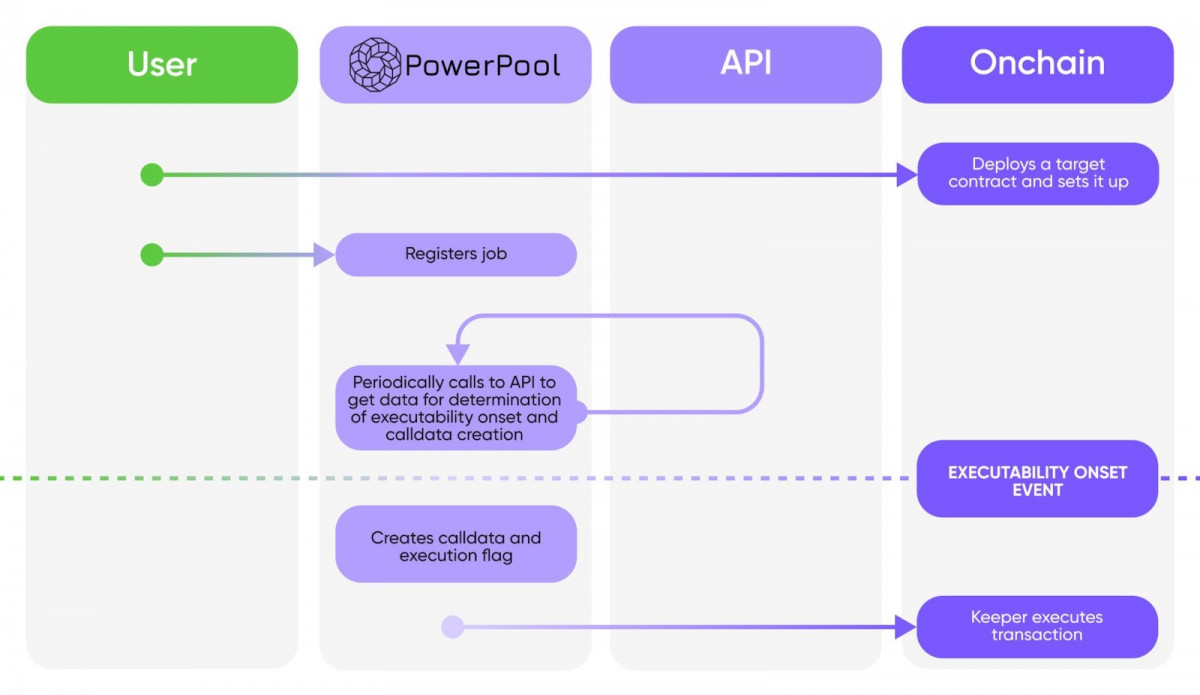
Based on its experience as a DePIN, PowerPool decided to improve its Keepers’ capabilities and automate AI agents’ decision-making. The basic concept is to use AI-generated triggers and PowerPool as an “execution hand” for accelerated transaction execution.
How is Powerpool 2.0 Useful for AI Agents?
PowerPool functions as a DePIN specializing in automating on-chain transaction executions triggered by both on-chain and off-chain triggers.
PowerPool’s primary service is Transaction Execution as a Service. This service involves executing transactions and sequences based on predefined execution algorithms. When working with Web3 AI agents, PowerPool plays an important role in facilitating on-chain operations.
Let’s check out the operational cycles of AI agents in Web2 and Web3 systems:
Web2
- Initial training phase;
- Receiving input from users;
- Producing results or data;
- Carrying out actions like sending emails or providing content/data.
Web3
- Training on on-chain data;
- Receiving input from users;
- Determining on-chain actions (e.g., buying or staking tokens);
- Executing transactions to update the blockchain network state on behalf of users.
AI agents operate off-chain and require dedicated infrastructure to execute transactions. It includes a Keeper bot, execution algorithms, RPC interfaces for supported chains, and MEV protection.
AI protocol designers have several options for implementing the output phase:
Centralized Bots: Developing protocol-specific bots for transaction execution.
Decentralized Infrastructure: Establishing decentralized Keeper bot networks with security measures.
Outsourcing: Using existing DePIN Keeper networks like PowerPool, focused on transaction execution.
However, there are some things to consider. Centralized bot infrastructures pose a single point of failure and risk user losses due to execution failures.
AI agent protocols lack a core business for decentralized Keeper bot infrastructure, but early projects have created keeper networks for one protocol. Building and running decentralized networks on different chains is time-consuming and not feasible for most protocols.
Outsourcing transaction execution to dedicated DePIN Keeper networks, such as PowerPool, and offering Transaction Execution as a Service could reduce operational burdens and accelerate deployment timelines for new AI agent models.
The PowerPool network’s architecture enables the development of off-chain triggers that launch task execution and make API calls to obtain necessary data. This opens up a big possibility of AI agents carrying out transactions in accordance with their decision-making processes.
PowerPool offers several benefits to AI agent protocols and their users:
Flexible Transaction Execution – Provides transaction execution under various conditions via AI agents’ protocol APIs.
Simplified Onboarding – Enables easy integration without the need for specific infrastructure development.
Decentralized and Secure Operations – Operates on a decentralized, permissionless network with robust security mechanisms, ensuring reliable and secure transaction execution.
For AI transaction execution, PowerPool is a DePIN layer for AI agent protocols. It effectively propagates off-chain decisions to on-chain updates and enhances overall operational efficiency and user experience.
Vasily Sumanov, Head of Research at PowerPool, stated: “Our mission is to facilitate practical AI agent usage in Web3 by providing reliable infrastructure and simplifying the process for AI strategy creators. With the growing demand for blockchain-based AI operations, PowerPool is poised to unlock substantial growth opportunities in the Web3 AI sector.”
Value Proposition for AI Agents Protocols and Users
The ability of the PowerPool to generate value for users, node operators, and the community depends on its effectiveness in capturing market share through executing transactions and strategies, including those managed by AI agents. This functionality is important for facilitating user interactions within Web3 protocols. So, as PowerPool facilitates transactions, node operators generate more fees, thereby enhancing the overall protocol’s value.
Vasily added, “PowerPool serves as the primary transaction growth layer for networks with low transaction fees, large user bases, and substantial liquidity. It expands the scope of automated strategies and AI-driven decision-making, increasing transaction volumes and enhancing user convenience.”
The latest DAO proposal concentrated on plans for Layer 2 deployments in the future, as well as methods for growing the user base via these networks.
Intending to become an infrastructure layer for Web3-focused AI agent protocols, PowerPool increases the potential number of transaction executions handled by PowerPool keepers.
Key factors influencing transaction executions within PowerPool include:
- The quantity of L1/L2 chains with PowerPool in use
- The number of customers on particular L1/L2 chains:
- The quantity of PowerPool-using third-party protocols.
- The quantity of PowerPool Template Jobs with UI/UX integration. This calls for developing Template Jobs and interacting with UI/UX.
- The quantity of AI agents that PowerPool transaction execution uses for on-chain operations.
- A specific L1/L2 chain, UI/UX, or AI agent protocol is given an incentive multiplicator (points). The multiplicator represents the difference between the execution activity of users when points are awarded for a certain L2/UI/AI or when there are no awards at all.
The following template metrics are displayed on an automated DCA strategy example:
- The number of networks that are supported;
- The quantity of distinct DCA Jobs that users have started;
- The total quantity of transactions;
- The total TVL that users have used to start DCA strategies.
Since AI agents operate on top of API calls, they have the ability to create massive demand for transaction execution without requiring the development of their own Keeper node infrastructure. So, there is a great chance to contribute to the anticipated expansion of the Web3 AI sector and capture value for $CVP node operators and stakers.
As a meta-token for the market for AI agents, the $CVP token captures value from several AI protocols. Web3 AI agent protocols that use PowerPool more frequently increase the value that is staked via $CVP, gaining from fee streams produced by AI-related and other transactions executed by PowerPool network.
Disclaimer
In line with the Trust Project guidelines, please note that the information provided on this page is not intended to be and should not be interpreted as legal, tax, investment, financial, or any other form of advice. It is important to only invest what you can afford to lose and to seek independent financial advice if you have any doubts. For further information, we suggest referring to the terms and conditions as well as the help and support pages provided by the issuer or advertiser. MetaversePost is committed to accurate, unbiased reporting, but market conditions are subject to change without notice.
About The Author
Victoria is a writer on a variety of technology topics including Web3.0, AI and cryptocurrencies. Her extensive experience allows her to write insightful articles for the wider audience.
More articles

Victoria is a writer on a variety of technology topics including Web3.0, AI and cryptocurrencies. Her extensive experience allows her to write insightful articles for the wider audience.














































